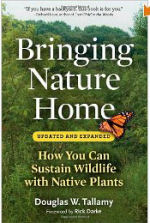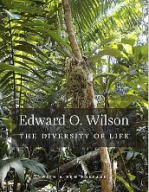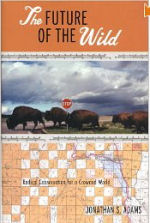For a start, here are six reasons…
The Food Chain
The web of life depends on plants. Through photosynthesis, plants convert the sun’s energy into food for insects and other herbivores. These feeders in turn sustain a whole range of wildlife that feed upon them, and so forth, all the way up the food chain.
Our local herbivores are especially adapted to feeding on native plants, and in many cases they feed on only one or a few species of plants. For example, the larvae of monarch butterflies will only eat leaves of plants in the milkweed family. No milkweed, no monarchs!
Biodiversity
Our best hope in maintaining our state’s native biodiversity is to protect the mix of native plants and animals that exist in our few surviving natural areas. Restoring degraded areas to their natural condition, and even planting a variety of native plants in our backyards, can also help.
We need to preserve native biodiversity where it exists and “create” it where it does not. Each of us can play a role in protecting and restoring the habitat that has been lost to human development.
Sustainability
Plants that have lived in Indiana for thousands of years are adapted to our climate and landscape. A complex set of checks and balances enables ecosystems to function in a way that allows for the greatest diversity possible. This can change significantly with land degradation, such as caused by severe landscape alteration and the proliferation of certain non-native (exotic) species.
Concerning exotics, many of the plants that we see in home landscapes come from far-away places where they have natural controls to keep them in bounds. Transplanted to Indiana, some of these romp mercilessly through our woodlands, shading or choking out our native flora. We’re just now beginning to realize the devastation that exotic invasives are wreaking on our natural resources.
Healthy Water
Our well-intentioned practices have profoundly disturbed the hydrologic cycle. Most of our wetlands have either been completely destroyed or significantly altered by channelization. In addition, many of our streams, rivers, and lakes are heavily silted and polluted due to runoff from agricultural land and developed areas.
When it rains, our gutters and storm drains sluice the water away as quickly as possible, often dumping superheated water and pollutants into our rivers and streams. Nature’s way is to let rainwater percolate gradually into the soil, getting filtered and cleansed in the process, and slowly recharging underground water stores that, in time, well up out of the ground to replenish our waterways.
Natural communities play a major role in this cycle. Plants of these communities have extensive root systems that hold soil in place as well as create channels for water to slowly percolate into the ground. By doing so these natural areas and restored lands help to maintain and improve our water quality.
On the home front, by planting rain gardens with native plants, we can hold rainwater in place to be cleansed as Nature intended and thus contribute to the health of our streams, rivers, and aquatic life.
Aesthetics
Indiana’s native plants are what compose our natural woodlands, grasslands, and wetlands. They are part of what makes Indiana “Indiana.” And extraordinarily beautiful they are, whether it be a forest floor covered with spring blooming wildflowers, or a natural prairie’s floral eye candy.
But our standards of beauty in the landscape have been shaped by the traditions of other lands—the English perennial border and cottage garden, French allees and parterres, English park lands and walled gardens, terraced Italian villas, and meticulously maintained Asian gardens. Slowly an appreciation is growing for the uniquely American garden featuring grasses, wildflowers, naturalistic ponds and other elements that seem quite at home in Indiana.
As the nursery industry strives to meet the growing demand for native plants, a whole new palette of ornamental species is becoming available to home gardeners. Landscapes that mimic native woodlands, prairie grasslands, woods edges, and wetlands lend a sense of place while offering habitat to the wildlife with whom we share our little corner of the planet.
Science
Don’t just take our word for it! Good science is beginning to put together compelling pieces of the ecologic puzzle, and there’s evidence that we need to take native plants seriously if we hope to continue enjoying life on earth as we know it.
Our recommended “eye-opening books” demonstrate that good science can be beautifully written as well as thought-provoking.



